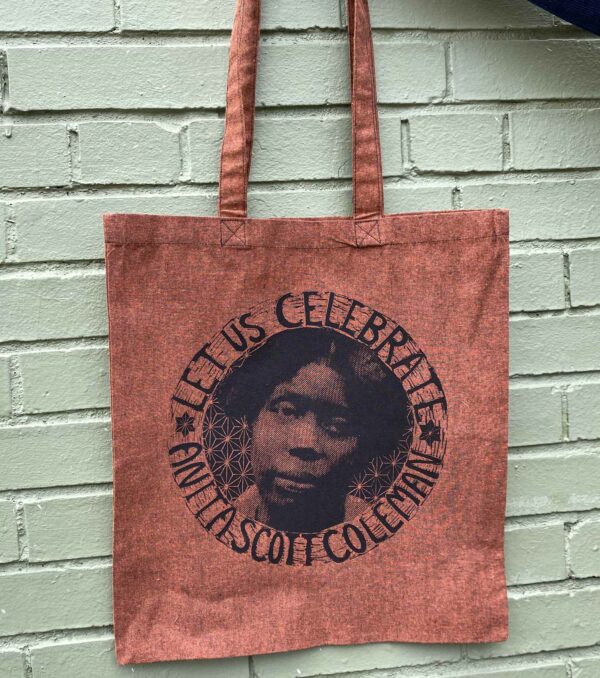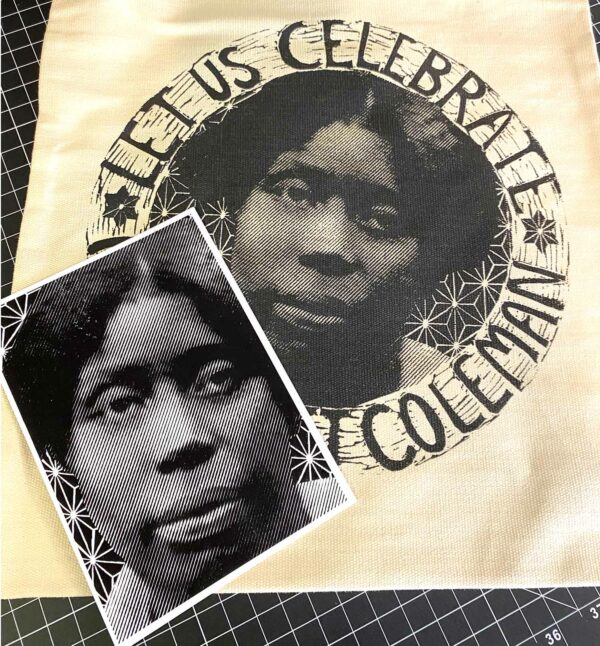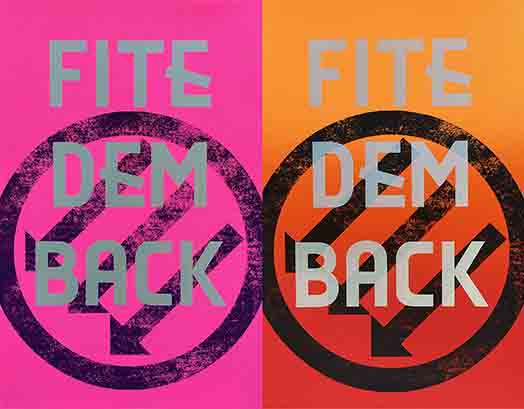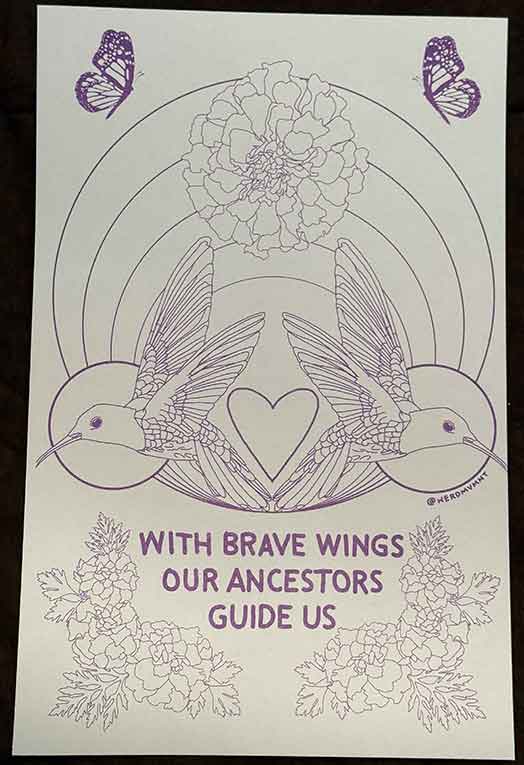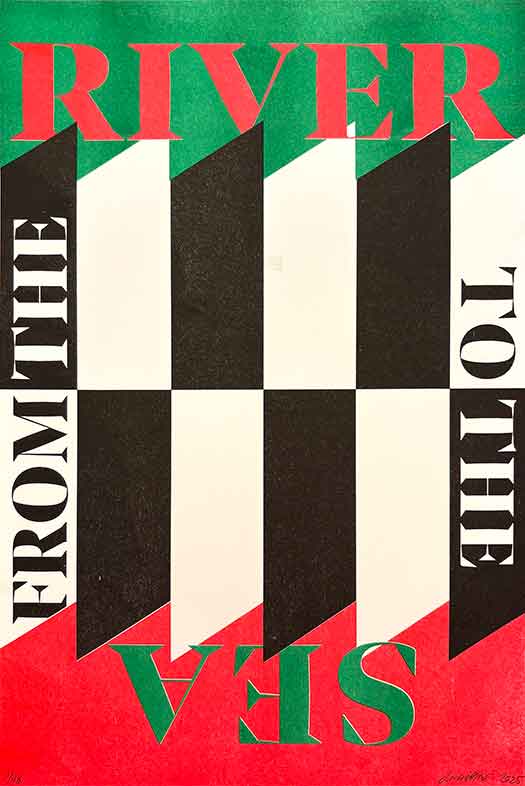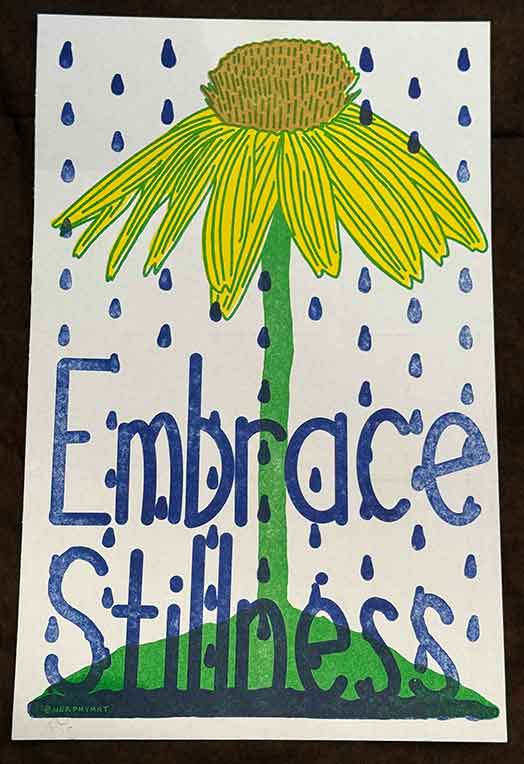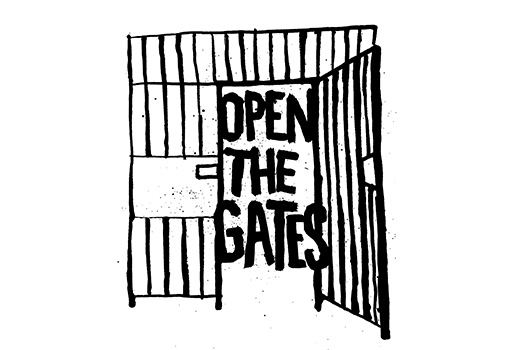I was honored this past October to be the guest artist at the Southwest Print Fiesta in Silver City, NM. The festival organizers informed me that Grant County (where Silver City is located), was the site of the 1951 labor struggle with Empire Zinc Company which was dramatized in the film "Salt of the Earth". (The majority of the miners are Mexican-Americans and want decent working conditions equal to those of their white counterpart miners. The unionized workers go on strike, but the company refuses to negotiate and the impasse continues for months. However, the miners become aware of a clause in their contract that says they can't strike but says nothing about their wives going on strike. SPOILER ALERT. This action led to one of the few early examples of labor winning major concessions from management.)
I decided to go to Silver City in the spring to walk around and check out the town. So there I was minding my own business when I came across a plaque of a black woman in this predominantly white and Latinx town of Anita Scott Coleman. In the vernacular of the Big Easy I said to myself "Hmmm. Who dat?" And this is what I learned...
Anita Scott Coleman (1890 – 1960), was a relatively unknown but important western contributor to the Harlem Renaissance. Born in Guaymas, Sonora, Mexico in 1890, Coleman’s mother, Mary Ann, met her father, William Henry Scott, near Fort Elliott, Texas where he served as a Buffalo Soldier (though not a dreadlock Rasta). He retired and they subsequently moved to Mexico. Following Anita’s birth the family returned to the U.S. Southwest.
Coleman grew up on a ranch outside Silver City, New Mexico, matriculated at New Mexico Teachers College in Silver City, and taught school. Her teaching career ended in 1916 when she married James Harold Coleman, a printer, printmaker and photographer born in Virginia.
Anita Scott Coleman became a published writer who produced more than thirty short stories as the Harlem Renaissance emerged. Though never a resident of Harlem, she epitomized the goals of its writers. She published her earliest work, thirteen short stories, in New Mexico between 1919 and 1925. The most famous of these, “The Little Grey House,” appeared in 1922.
She later moved to Los Angeles, California in 1926 to join her husband James who moved looking for work two years earlier. There she raised four children, ran a boarding house, and published her most sophisticated stories over an eight-year period between 1926 and 1933. Among her best stories are “The Brat” and “Three Dogs and a Rabbit.” She took a seven-year hiatus from writing, but in the early forties published at least five more stories and then in 1948 she published a volume of poetry, Reason for Singing. A children’s book, The Singing Bells, was published posthumously in 1961.
Her publications emphasize racial pride and issues of import to black women as well as inveighing against white racism, lynching, employment discrimination, and segregation. Her poetry appeared in anthologies such as Beatrice Murphy’s Negro Voices (1938) and Ebony Rhythm (1948).
Much of Coleman’s writing focused on the Southwest. In “The Little Grey House,” Coleman describes the availability of home ownership for southwestern African Americans. The story “El Tisico” suggests Coleman’s Afro-Latino cultural heritage and her knowledge of the Southwest and of Mexico. Her essay “Arizona and New Mexico - the Land of Esperanza,” solicited for the series, “These ‘Colored’ United States” by The Messenger magazine, shows her respect for the history and élan of the Southwest.
These bags were designed by me with the lettering carved on linoleum block by my comrade and friend Thea Gahr who lovingly hand-pulled the screens. For all of the bags sold on the Justseeds site the cooperative will keep 30% to cover handling and shipping costs and the remaining 70% will be donated to the New Mexico chapter of the NAACP. Each bag comes with a front-of-the-refrigerator worthy image of Anita Scott Coleman with a short bio signed by Thea and me.
(*Hand wash in cold water. Hang to dry.)
Choose from three different colors/fabrics: lightweight natural, lightweight brown, or heavyweight natural
